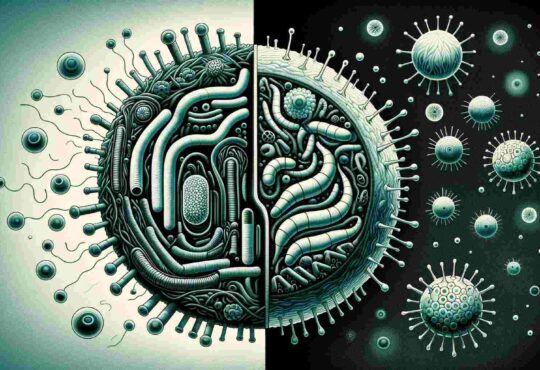Table of Contents
Breast cancer is a significant public health concern in Pakistan, with increasing incidence rates and limited awareness regarding early detection and screening. In this article, we will discuss the current status of breast cancer in Pakistan, including its epidemiology, risk factors, symptoms, diagnosis, treatment, and prevention. We will also address common misconceptions and provide useful tips for individuals to reduce their risk and support breast cancer patients.

1. Introduction
Breast cancer is the most common cancer in women worldwide, and its incidence is rising in low- and middle-income countries, including Pakistan. In Pakistan, breast cancer is the second most common cancer in women after cervical cancer, accounting for 38% of all female cancers. According to the Pakistan National Cancer Registry, there were approximately 90,000 new cases of breast cancer and 40,000 deaths from breast cancer in 2018.
Breast cancer not only affects the physical health of women but also has significant psychological and social impacts on patients, families, and communities. Therefore, it is essential to raise awareness about breast cancer and promote early detection, diagnosis, and treatment in Pakistan.

2. Breast Cancer Epidemiology in Pakistan
Breast cancer incidence rates in Pakistan vary across regions and ethnicities, with higher rates in urban areas and certain ethnic groups, such as Pathans and Sindhis. The age-standardized incidence rate (ASR) of breast cancer in Pakistan is 40.4 per 100,000 women, which is lower than the global ASR of 47.8 per 100,000 women but higher than the regional ASR of 34.7 per 100,000 women. Breast cancer incidence rates in Pakistan are projected to increase by 50% in the next decade, primarily due to demographic and lifestyle changes, such as aging, urbanization, and obesity.
3. Risk Factors for Breast Cancer in Pakistan
Breast cancer risk factors in Pakistan are similar to those in other countries, including age, gender, family history, reproductive factors, hormonal factors, lifestyle factors, and environmental factors.
However, some risk factors may be more prevalent or relevant in the Pakistani context, such as early marriage and pregnancy, consanguinity, low socioeconomic status, lack of education and awareness, and exposure to environmental pollutants.
4. Signs and Symptoms of Breast Cancer
Breast cancer symptoms in Pakistan are similar to those in other countries, including a lump or mass in the breast, changes in breast size or shape, nipple discharge or inversion, skin changes or dimpling, and breast or nipple pain.
However, many women in Pakistan may delay seeking medical attention due to fear, shame, or lack of access to healthcare services. Therefore, it is crucial to educate women about the importance of breast self-examination and clinical breast examination by a healthcare provider.
5. Breast Cancer Screening and Diagnosis in Pakistan
Breast cancer screening and diagnosis in Pakistan are challenging due to various factors, such as limited healthcare resources, inadequate infrastructure, and cultural barriers. Currently, there is no national breast cancer screening program in Pakistan, and screening mammography is not widely available or affordable.
Breast cancer apts may also be misinterpreted or overlooked by healthcare providers who lack proper training or experience in breast cancer diagnosis and management. Therefore, it is crucial to improve breast cancer screening and diagnosis in Pakistan through various strategies, such as increasing awareness, expanding healthcare services, and training healthcare professionals.
6. Breast Cancer Treatment in Pakistan
Breast cancer treatment in Pakistan depends on various factors, such as the stage, grade, type, and subtype of the cancer, as well as the patient’s age, health status, and preferences. Breast cancer treatment options in Pakistan include surgery, radiation therapy, chemotherapy, hormonal therapy, targeted therapy, and palliative care.
However, the quality and availability of breast cancer treatment in Pakistan may vary across regions and healthcare facilities, and many patients may face financial, social, or cultural barriers to accessing timely and appropriate treatment. Therefore, it is crucial to improve breast cancer treatment and care in Pakistan through various approaches, such as enhancing healthcare infrastructure, increasing funding and resources, and promoting patient-centered care.
7. Prevention and Early Detection of Breast Cancer
Breast cancer prevention and early detection are crucial in Pakistan, where the majority of breast cancer cases are diagnosed at advanced stages, leading to poorer prognosis and survival.
Breast cancer prevention and early detection strategies in Pakistan include promoting healthy lifestyles, such as regular physical activity, healthy diet, and avoidance of tobacco and alcohol; reducing exposure to environmental pollutants and radiation; and promoting breast cancer awareness and education, including breast self-examination and clinical breast examination.
Moreover, the government and civil society can play a critical role in implementing policies and programs that promote breast cancer prevention and early detection in Pakistan.
8. Misconceptions about Breast Cancer in Pakistan
Breast cancer is often surrounded by myths, misconceptions, and stigmatization in Pakistan, which can lead to delayed diagnosis, treatment, and care for breast cancer patients. Some common misconceptions about breast cancer in Pakistan include that breast cancer is contagious, caused by supernatural forces, or a punishment for immoral behavior. Therefore, it is crucial to dispel these misconceptions and promote accurate and evidence-based information about breast cancer in Pakistan through various channels, such as media, education, and advocacy.
9. Coping with Breast Cancer Diagnosis and Treatment
Breast cancer diagnosis and treatment can have significant emotional and psychological impacts on patients and their families in Pakistan, where social support and mental health services may be limited or stigmatized.
Therefore, it is crucial to provide comprehensive and compassionate care to breast cancer patients in Pakistan, including psychological and social support, symptom management, and palliative care. Moreover, breast cancer patients and their families can benefit from joining support groups, accessing reliable information, and seeking professional counseling.
10. Supporting Breast Cancer Patients and Survivors
Breast cancer patients and survivors in Pakistan may face various challenges and needs related to their health, well-being, and quality of life, such as financial support, employment opportunities, education, and advocacy.
Therefore, it is crucial to promote the empowerment and participation of breast cancer patients and survivors in Pakistan through various initiatives, such as peer support, survivorship programs, and advocacy campaigns.
Moreover, healthcare professionals, policymakers, and civil society can collaborate to address the systemic and structural barriers that prevent breast cancer patients and survivors from achieving their full potential.

11. Breast Cancer Research and Advocacy in Pakistan
Breast cancer research and advocacy in Pakistan are essential to improving the understanding, prevention, treatment, and care of breast cancer in the country. Breast cancer research in Pakistan includes various aspects, such as epidemiology, genetics, biomarkers, imaging, treatment, and survivorship.
Breast cancer advocacy in Pakistan includes various activities, such as awareness campaigns, policy development, resource mobilization, and community engagement. Therefore, it is crucial to support and promote breast cancer research and advocacy in Pakistan through various means, such as funding, collaboration, and capacity building.
Breast cancer is a significant public health issue in Pakistan, affecting thousands of women and their families every year. However, breast cancer in Pakistan is often diagnosed at advanced stages, leading to poorer outcomes and higher mortality rates. Therefore, it is crucial to improve breast cancer awareness, screening, diagnosis, treatment, and care in Pakistan through various strategies, such as education, healthcare infrastructure, funding, and policy development.
Moreover, breast cancer patients and survivors in Pakistan need comprehensive and compassionate support and empowerment to overcome the challenges and barriers they face. By working together, healthcare professionals, policymakers, civil society, and breast cancer patients and survivors can make a difference in the fight against breast cancer in Pakistan.
FAQs
1. What is the most common type of breast cancer in Pakistan?
• The most common type of breast cancer in Pakistan is invasive ductal carcinoma.
2. What are the risk factors for breast cancer in Pakistan?
• The risk factors for breast cancer in Pakistan include age, family history, reproductive factors, lifestyle factors, and genetic mutations.
3. What is the survival rate for breast cancer in Pakistan?
• The survival rate for breast cancer in Pakistan varies depending on various factors, such as the stage, grade, type, and subtype of the cancer, as well as the patient’s age, health status, and treatment.
4. How can breast cancer be prevented and detected early in Pakistan?
• Breast cancer can be prevented and detected early in Pakistan through various strategies, such as promoting healthy lifestyles, reducing exposure to environmental pollutants and radiation, and promoting breast cancer awareness and education.
5. How can I support breast cancer research and advocacy in Pakistan?
• You can support breast cancer research and advocacy in Pakistan by donating to reputable organizations, participating in awareness campaigns, and advocating for policies that promote breast cancer prevention, treatment, and care.






